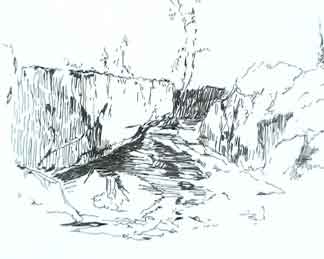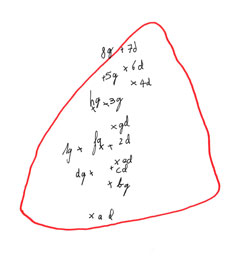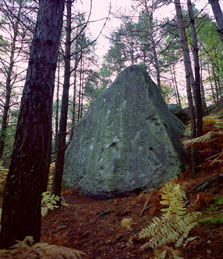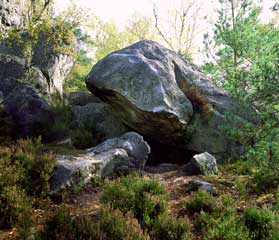Rochers à Fontainebleau
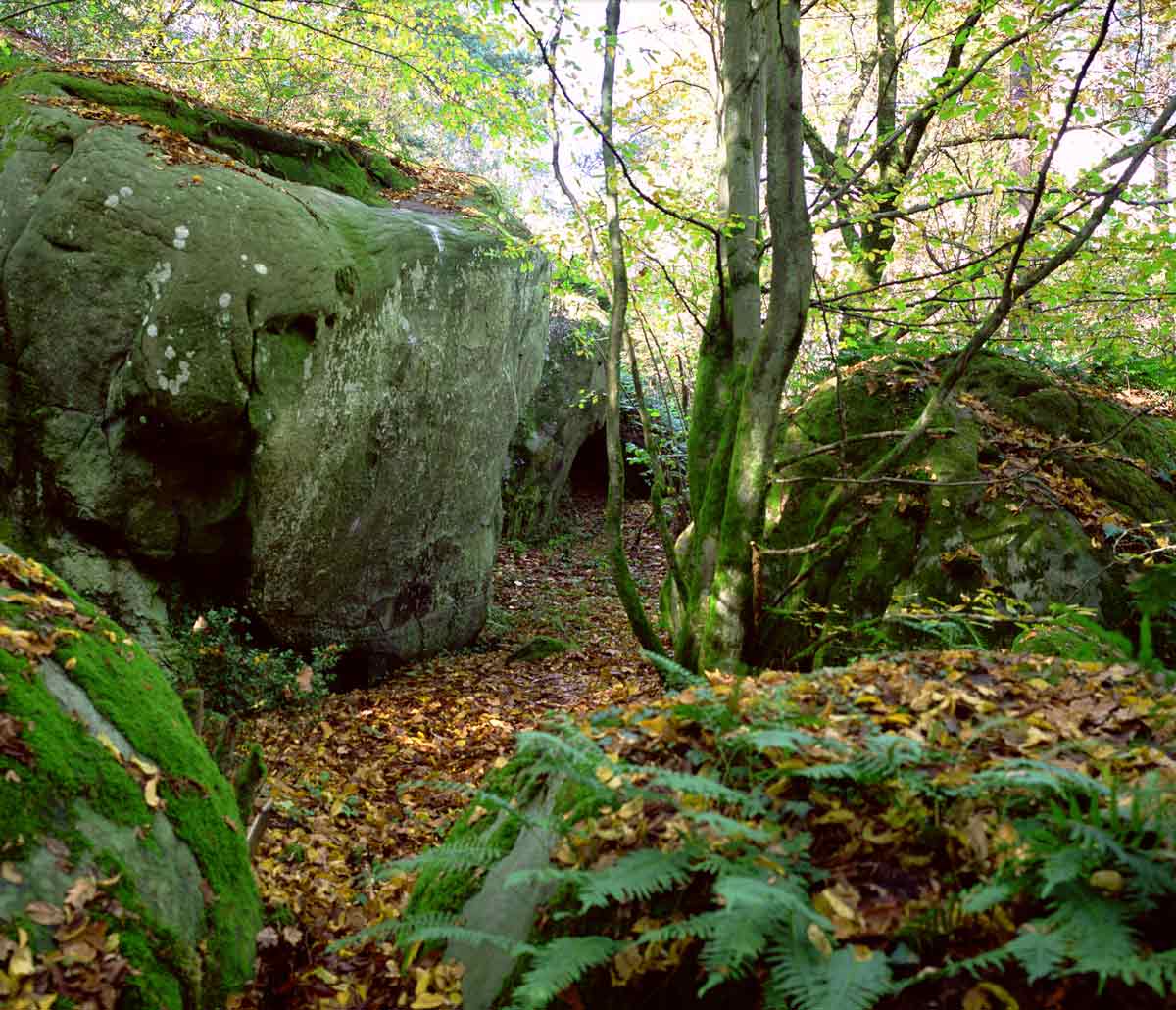
Mixed media
2003/4
Mixed media project based on the rocks in the Forest of Fontainebleau combining the history of European landscape painting (Barbizon school and Cezanne) and contemporary climbing.
The project developed working closely with several notable french climbers on their project routes including: Christophe Laumône, Catherine Miquet, Jacky Godoffe and Jo Montchaussé.
Note: A bouldering climbing route is, interestingly referred to as a "problem".
The Duel
SD video
3.32min
Dan Shipsides
2003
Rochers a Fontainebleau (short A+B single screen edit)
SD video
14.55min
Dan Shipsides
2003
The project consists of a number of elements exhibited together:
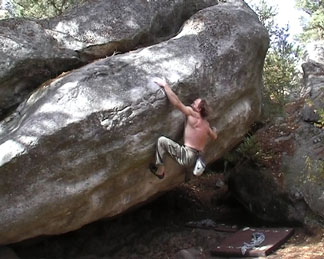 DVD video Part A and B
DVD video Part A and B
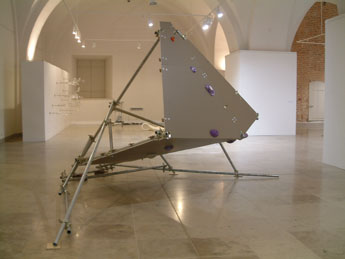 Dans un Chaos - sculptural construction
Dans un Chaos - sculptural construction
Contextual information:
Rochers à Fontainebleau
Focusing on the boulders in the Forest of Fontainebleau, near Paris, Rochers à Fontainebleau uses video, animation, photography, sculpture and text to examine a creative and ethical lineage between the Barbizon artists of the 19th century and todays’ bouldering rock-climber.
The project makes historical reference to poetic descriptions, paintings and drawings of the rocks by the Barbizon artists such as Paul Huet, Courbet, Desnoyer, Corot, Dupré and of a later period Cézanne. The Barbizon artists responded to a social radicalism founded in the ideals of the French Revolution to develop landscape painting in itself - art depicting seemingly insignificant sites as a way of becoming closer to “nature” or the land and reacting against the hierarchy of the established art academy. Grounding much of what we today think of as landscape art their innovation lies in the development of pleinair painting, working directly outside in front of their subject. As the titles of many of the paintings indicate e.g. Rochers à Fontainebleau, the rocks were a central feature or motif in their work.
Rochers à Fontainebleau develops a parallel between the painters’ creativity and that of the climbers’ (who now climb the same boulders in the forest), in developing new climbing routes or ”problems”. Relationships between the artist and the motif are examined and expanded within a broadened notion of creative activity. The Fontainebleau climber shares and develops the Barbizon artists’ desire to simplify an urban existence through a direct and obsessive engagement with the land - performing a relationship with the subtleties and nuances of “nature” and creating new cultural forms from that engagement.
The notion of the cultural form is tested through the proposition of the bouldering “route” as a creative form. The work aims to show how the “route” presents spatial narrative, engenders or enables expression, has authorship, has a given name and has cultural currency. Created with skill, passion and expression the route is akin to an art-work where others come to watch, view, study, practice and pursue the move sequences in an act of consumption.
During the 1940s’ and 50s’ the activity of bouldering emerged in the forest as a training method for alpine climbing but over the last three decades has developed into a world-wide pursuit in its own right. Because of its simplicity and directness it is often described as the purest form of climbing and in terms of precision, repetition and sequencing is often compared to dance. The essence of bouldering lies in the obsessive focus of a philosophical pursuit where problems (routes) are posed which push the climbers’ ability to the extreme in the relative safety of the low-level rocks. A route may consist of just 5 or 6 moves where invention and ingenuity often becomes crucial in “unlocking” the problem. To create the route and link the moves, the climbers’ body must act and move with agile precision – possibly a matter of the appropriate amount of pressure on a toe hold or the exact position of a thumb curl in relation to the spatiality and nature of the rock.
In relation to the subject or motif, bouldering presents an interesting comparison to plein-air painting in that both require a creative and often empathetic sensitivity to space and form and a committed engagement with the demands of a direct connection with the immediate environment.
Shown at:
Ardous intent. (The Hanging) Tulca 2008. Group show (collab. with Neal Beggs and Tibaut Espiau). Galway Arts Centre.
Performance. Wings Art Project Space, Geneva, Switzerland. 2 person show. 2006
Beyond landscape Royal West Academy. Lan2d Group show. Bristol. 2005
Beyond landscape Deanclough Halifax.Lan2d. 2004
Frieze revolution / Rochers à Fontainebleau HEDAH. Solo show. Maastricht. 2004
Beta. Solo exhibition. GtGallery. Belfast. 2004
European Space International Sculpture Quadrennial. Riga, Latvia. 2004
Videoserver Smart Project Space. Liste03 Basel. Switzerland. 2003
Rochers à Fontainebleau Context Gallery, Derry. 2003
Links:
Wings Project Arts Space: http://www.wingsprojects.com/index.htm
